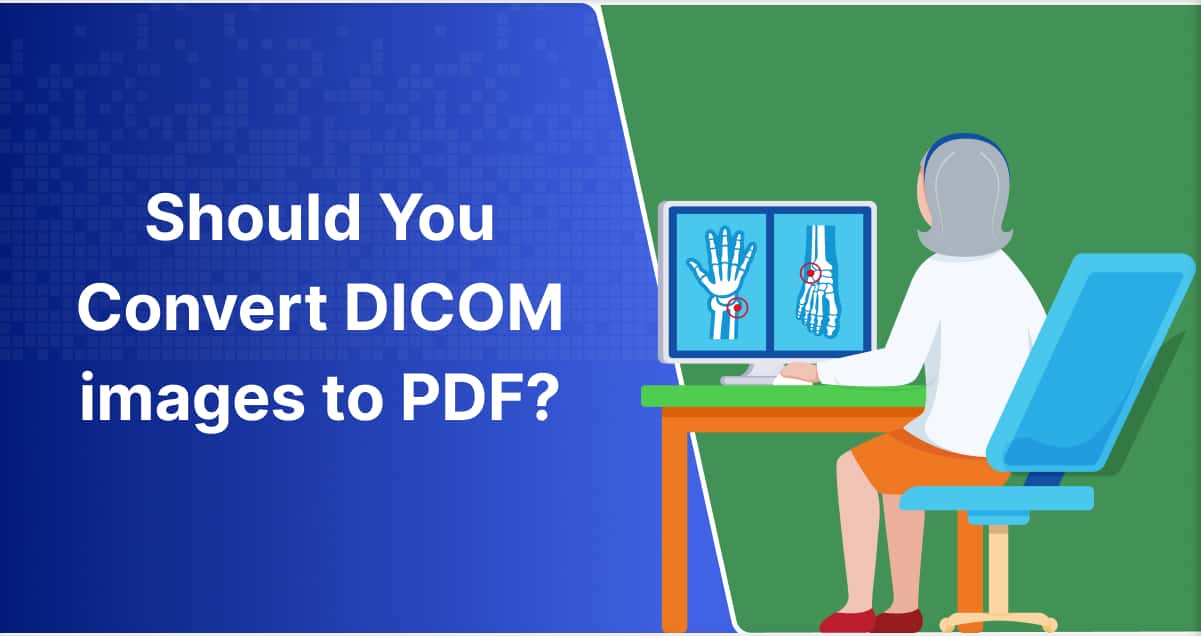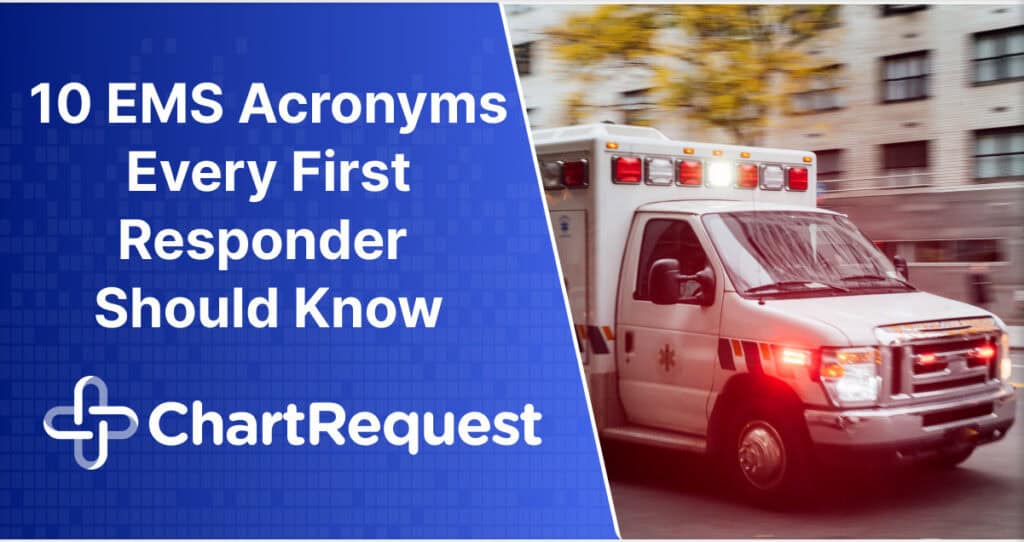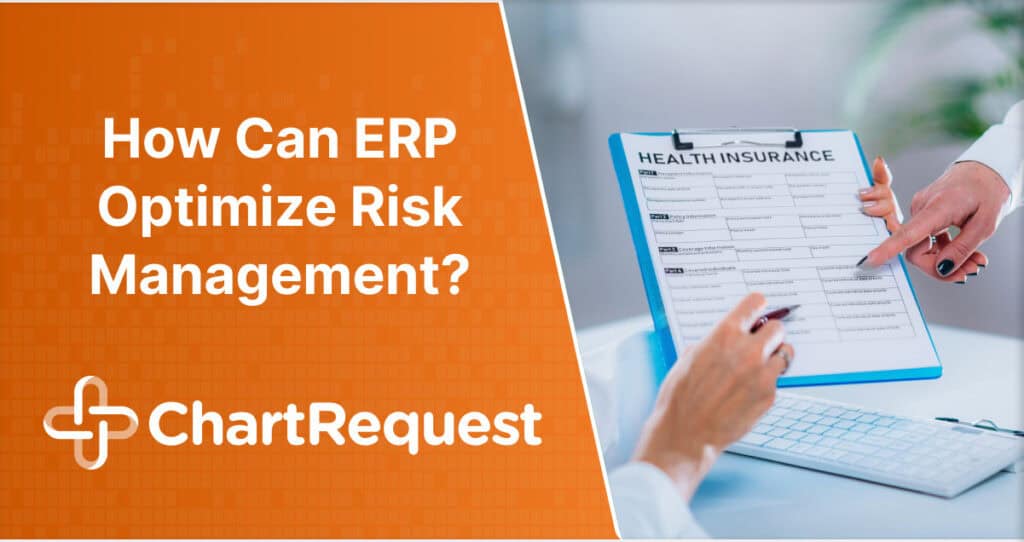Digitizing medical records was meant to make patient data easy to search, retrieve, and access for authorized individuals. Accessibility is a major factor for this, which is why converting DICOM images to PDF files is a big deal.
However, early EMR and EHR systems struggled to achieve this goal. This is unfortunate in an industry where efficient and safe data transfer could make the difference between life and death.
To access DICOM files means using a dedicated medical DICOM viewer. It’s a type of software that’s not typically present in your everyday Windows and OS computers, making it inaccessible for the average requestor.
Additionally, DICOM files are traditionally transported using medical CDs, which many consider obsolete and wasteful. In fact, most new computers aren’t being built with optical drives to even read CDs.
It adds to the frustration of your entire requestor community.
Whether it’s a patient, a lawyer, an insurance company, or another facility that needs the information, accessibility is your responsibility.
Understanding DICOM in Healthcare
Digital Imaging and Communications in Medicine (DICOM) was a major technological evolution in healthcare.
DICOM was a response to the pressing need for standardized medical imaging data. It was a collaboration between the American College of Radiology and the National Electrical Manufacturers Association in the 1980s.
So, what’s DICOM’s big role? Well, it’s all about making sure that medical images can be read across different systems, whether it’s X-rays, CT scans, or MRIs. It’s like a translator that ensures devices with different manufacturers understand each other.
The shift from old-school physical films to digital formats is a bit like moving from vinyl records to digital music:
In the early days of medical imaging, healthcare providers had physical files for images. They were bulky and prone to damage, and storing them was a headache. DICOM turned these physical files into digital files that are easy to store and harder to damage.
This digital leap meant doctors could read images faster, and it has led to some notable advancements, such as:
- Digital images removed the need for large physical storage spaces for films.
- Healthcare providers can access medical images remotely, facilitating telehealth and specialist consultations.
- Quick access to a patient’s imaging history aids in timely and accurate diagnoses.
When DICOM is easy to share, a radiologist in New York can review a scan taken in California without delay. Collaboration and consultation without geographical barriers are now possible, but, as with any technology, challenges remain.
This is where the call for converting DICOM to PDF comes in.
The Necessity of DICOM to PDF Conversion
When we talk about DICOM files in healthcare, it’s like having a high-tech gadget that only a few can operate. DICOMs are fantastic at storing medical images, but they come with their fair share of challenges.
Accessibility and operability outside of healthcare facilities are the main issues.
So, why the push for converting these files to PDF?
Let’s break it down:
First, everyone knows what PDFs are. They can be opened on almost any device, from your high-end workstation to a basic smartphone. In contrast, DICOM files need specialized software. The problem is that DICOM viewers are not always available, especially outside medical settings.
Also, sharing a DICOM file usually means burning it on a CD. PDFs simplify the process, making it as easy as sending an email attachment. Accessible data is not just about convenience. DICOM to PDF conversion innovates the way we provide healthcare in terms of:
- Supporting telemedicine: The use of innovative telehealth is rising. Having medical images in PDF format allows for online consultations and faster treatment plans. This removes the need to go to hospitals for simple checkups, and it helped Alliance for Integrated Care of New York (AICNY) reduce ER visits by 11% with tele-triage.
- Legal and insurance: Medical records are crucial in legal and insurance cases. PDF ensures that all parties can review the necessary documents without technical hiccups.
- Patient empowerment: Patients today are more involved in their healthcare journey. Providing medical images in a format patients can open and view on their devices empowers them in their health decisions.
How DICOM to PDF Conversion Enhances Patient Care
Statistics highlight the importance of data mobility, including DICOM to PDF conversion.
A study published in the National Library of Medicine highlights the negative impact of low patient engagement. The lack of care is a significant contributor to mortality in treatable diseases.
Converting DICOM to PDF might seem too technical on the surface. However, this tweak can impact patient care by making data accessible for all parties involved.
This conversion turns medical imaging data into a format that’s way easier for everyone to use. It boosts both the efficiency and quality of healthcare in a few ways.
- Seamless collaboration between healthcare providers.
Imagine how convenient it would be if a doctor in one city could now easily check out a patient’s medical images sent over from a clinic miles away. By changing these images to PDF, healthcare pros can share and review them no matter where they are. - Efficient patient data management.
Converting DICOM to PDF makes them a perfect fit for electronic health records. This means fewer mix-ups and fewer errors. It’s all about getting the right info in the right hands at the right time, which is crucial in medicine.
Did you know that medical errors, even with just 1%, when applied across millions of patients, can send the entire sector into a crisis?
However, efficient healthcare data management helps combat this by reducing diagnostics errors.
Where to Convert DICOM to PDF
Converting DICOM to PDF is not only about changing file formats. You also have to maintain the integrity and quality of crucial medical images.
Regarding image quality, the clarity and detail in medical images are critical for accurate diagnoses. Any loss in quality during conversion can lead to misinterpretations and, subsequently, misdiagnoses.
Additionally, it’s important to maintain metadata integrity. DICOM files contain vital metadata like patient information, imaging parameters, and more, and preserving them during conversion to PDF is crucial.
This process, while technical, should be user-friendly for the sake of the record clerk handling the release of information.
There are multiple tools on the internet advertised to convert DICOM images to PDF files, but these should be approached with caution. While a potential solution may seem convenient, it could be risky if there isn’t a business associate agreement in place.
ChartRequest: Streamlining the ROI Process in Healthcare
With the importance of medical records in healthcare practice and the current challenges of data mobility it faces, tools like ChartRequest ensure data flow where it is needed.
As the number 1 release of information solution, ChartRequest makes medical information retrieval an easy task.
Our technology isn’t just fast—we make the release of information a smart process. We are reshaping how healthcare providers access and manage essential records. That includes the convenient sharing of DICOM in a PDF format.
Let’s look at what sets ChartRequest apart:
- Streamlined record retrieval: The platform simplifies the process of getting medical records. What used to take a lot of time is now quick and efficient. Our medical record copying service includes converting DICOM to PDF. We ensure that these crucial medical images are easily accessible to those who need them.
- Commitment to HIPAA compliance: In healthcare, protecting patient information is critical. ChartRequest takes this seriously by strictly adhering to HIPAA regulations. This commitment ensures that we handle all information with the highest security measures. Our release of information plan maintains the privacy and integrity of patient data.
- Robust security: Our HIPAA compliance includes comprehensive security throughout our infrastructure. ChartRequest employs advanced security measures to safeguard sensitive health information. This includes encrypted transmissions and secure data storage for healthcare providers and patients.
- Saving time: Administrative tasks like record retrieval can take up much time. ChartRequest cuts down retrieval time by up to 96%. We help free up healthcare professionals’ time to devote more attention to patient care.
- Reducing errors: Automating record retrieval and conversion means there’s a lower chance of errors. This is a critical factor in providing accurate and effective patient care.
Streamline Your Medical Records with ChartRequest Today
The conversion of DICOM to PDF enhances both patient care and operational efficiency.
This simple conversion helps doctors and healthcare teams work together with important medical information is a click away. This convenience is important in making quick, accurate decisions for patient care.
And here’s where ChartRequest shines. It’s like having a super-efficient assistant who not only speeds up getting your medical records but also makes sure they’re secure and handled right, in line with all those important HIPAA rules.
This means less time worrying about paperwork and more time focused on what really matters – taking care of patients.
So, if you’re in the healthcare field and looking to step up your game, think about how ChartRequest could make a difference in your day-to-day work.
It’s about making things faster, safer, and just plain better. Why not see what ChartRequest can do for your practice? It might just be the game-changer you need.








